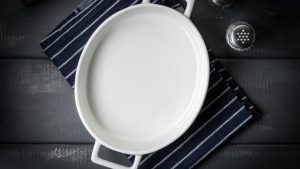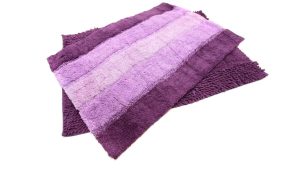What is The Best Clay for Baking Dishes When it comes to baking dishes, the choice of material can significantly impact your culinary creations. Clay-baking dishes have gained popularity in recent years due to their ability to enhance the flavor and texture of various dishes. If you’re looking for the best clay for baking dishes, you’ve come to the right place. In this article, we’ll explore the world of clay baking dishes, and their benefits, and help you make an informed decision when selecting the perfect one for your kitchen.
Why Choose Clay for Baking?
Unveiling the Unique Benefits
Clay baking dishes have been used for centuries, and for good reason. They offer a range of unique benefits that set them apart from other materials:
- Even Heat Distribution: Clay is an excellent conductor of heat, ensuring that your dishes are cooked evenly and thoroughly.
- Flavor Retention: When you cook in a clay dish, it retains the natural flavors of the ingredients, making your dishes taste more authentic and delicious.
- Moisture Retention: Clay has a porous nature, which helps in retaining moisture. This is especially beneficial when roasting or braising, resulting in tender and juicy dishes.
- Enhanced Crusts: Clay baking dishes are known for creating a beautiful, crispy crust on the outside while keeping the inside moist and tender.
The types of clay used in baking dishes
Not all clay is the same, and the type of clay used for baking dishes can vary. The two most common types are:
- Earthenware Clay: This type of clay is perfect for slow cooking and roasting. It’s known for its rustic appearance and ability to create exceptional flavors.
- Stoneware Clay: Stoneware clay is highly durable and can withstand high temperatures. It’s perfect for dishes that require longer cooking times.
Selecting the Best clay Baking Dish
Now that you understand the benefits of clay baking dishes and the different types of clay, let’s dive into how to select the best one for your needs:
Size Matters
Consider the size of your clay baking dish. The dish should comfortably fit in your oven and accommodate the quantity of food you plan to cook. Keep in mind that the size of the dish will affect cooking times and heat distribution.
Glazed or Unglazed
Clay baking dishes can be glazed or unglazed. Glazed dishes are easier to clean and maintain, but they may not offer the same depth of flavor as unglazed ones. Your choice depends on your cooking preferences and the ease of cleaning you desire.
Handles and Lids
Some clay baking dishes come with handles and lids, while others do not. Handles make it easier to transport the dish from the oven to the table. Lids can help trap moisture, making them ideal for certain recipes.
Brand and Quality
Investing in a reputable brand that specializes in clay bakeware is crucial. High-quality clay dishes are less likely to crack or break in the oven. Do your research and read reviews to ensure you’re making a wise investment.
Caring for Your Clay Baking Dish
Proper care and maintenance are essential to ensure the longevity of your clay baking dish. Here are some tips to keep it in perfect condition:
- Season Your Dish: Before the first use, soak the dish in water for a few hours. This helps prevent cracking and enhances the flavor of your dishes.
- Avoid Extreme Temperature Changes: Clay can be sensitive to rapid temperature changes. Gradually heat or cool your dish to prevent cracking.
- Hand Wash Only: Most clay baking dishes are not dishwasher safe. Hand wash with mild detergent and avoid abrasive scrubbers.
- Store with Care: When storing your clay dish, make sure it is completely dry to prevent mold growth.
Cooking Tips and Recipe Ideas
To make the most of your clay baking dish, here are some tips and recipe ideas:
- Classic Roast Chicken: Use your clay baking dish to roast a succulent chicken with herbs, garlic, and lemon for a mouthwatering dinner.
- Vegetable Ratatouille: Create a delightful vegetable ratatouille that’s bursting with flavors, thanks to the even heat distribution of your clay dish.
- Artisan Bread: Bake a crusty artisan bread with a chewy interior in a preheated clay baker for a bakery-quality result.
- Lasagna: Craft a luscious lasagna with perfectly browned cheese on top in your clay baking dish.
Maintaining the Aesthetics of Baking Dishes
Beyond the practical benefits of clay baking dishes, their aesthetic appeal can’t be overlooked. These dishes often have a unique, artisanal look that can enhance your table settings.
Consider the following tips for preserving the aesthetics of your clay baking dish:
- Season for Color: As you season your clay dish before the first use, take note of how the clay’s color deepens. This enhances the rustic charm, making each dish unique.
- Display as Tableware: Clay baking dishes can double as beautiful tableware. Use them to serve your creations directly from the oven to your dining table.
- Mix and Match: Don’t hesitate to mix and match various clay dishes to create an eclectic and appealing table setting for special occasions.
Baked goods made from clay have a lot of versatility
Clay-baking dishes are incredibly versatile and can be used for a wide range of dishes. Here are some ideas for different dishes you can prepare in your clay baking dish:
- Casseroles: Create hearty casseroles with layers of flavors. The even heat distribution ensures that every bite is perfection.
- Pasta Bakes: Whether it’s a classic mac and cheese or a rich lasagna, clay baking dishes are ideal for pasta bakes.
- Desserts: From fruit cobblers to bread pudding, clay dishes can create sweet treats that are second to none.
- Vegetarian Delights: Explore vegetarian recipes like stuffed bell peppers or mushroom risotto, taking advantage of clay’s ability to enhance flavors.
Seasonal Cooking with clay Dishes
As the seasons change, you can adapt your clay baking dishes to create dishes that align with the weather. Here’s how you can make the most of your clay dish throughout the year:
Summer:
- Prepare fresh, vibrant salads and use your clay dish to serve them in style.
- Grill seafood to perfection and present it on clay platters for a beachy feel.
Fall:
- Bake warm and comforting apple or pumpkin pies, achieving a flaky crust with a mouthwatering filling.
- Slow-cook hearty stews and soups that can simmer for hours, filling your home with tantalizing aromas.
Winter:
- Roast seasonal vegetables that are at their peak, such as Brussels sprouts and sweet potatoes.
- Experiment with different varieties of bread, from sourdough to rye, using your clay baker to achieve artisanal quality.
Spring:
- Make use of fresh, spring produce like asparagus and artichokes to create delightful side dishes.
- Try your hand at a savory quiche, perfectly cooked in a clay baking dish.
The Timeless Elegance of Baking Dishes
In conclusion, clay baking dishes bring timeless elegance and exceptional culinary benefits to your kitchen. From enhancing the flavor of your dishes to their versatility, these dishes are a worthy investment for any cooking enthusiast.
So, whether you’re preparing a cozy family dinner or hosting a grand dinner party, you can rely on the best clay-baking dishes to deliver not only delectable dishes but also a touch of elegance that leaves a lasting impression.
(FAQs) about clay baking dishes:
Q1: What are the benefits of using clay baking dishes?
A1: Clay baking dishes offer even heat distribution, moisture retention, and enhanced flavors in your dishes. They create a crispy crust and are perfect for slow cooking and roasting.
Q2: How do I choose the right size of a clay baking dish?
A2: Consider the size of your oven and the quantity of food you plan to cook. The dish should comfortably fit in your oven, leaving some space for proper heat circulation.
Q3: What’s the difference between earthenware and stoneware clay dishes?
A3: Earthenware is perfect for rustic dishes, while stoneware clay is more durable and can withstand high temperatures for longer cooking times.
Q4: Are glazed or unglazed clay baking dishes better?
A4: Glazed dishes are easier to clean, while unglazed dishes can enhance flavors. Your choice depends on your cooking preferences.
Q5: How do I maintain and clean a clay baking dish?
A5: Hand wash your clay baking dish with mild detergent and avoid abrasive scrubbers. Always make sure it’s completely dry before storing to prevent mold growth.
Q6: Can I use a clay baking dish for desserts?
A6: Yes, you can use clay baking dishes to make delicious desserts like cobblers, bread pudding, and fruit crisps.
Q7: Are there any specific dishes or recipes that work best with baking dishes?
A7: Clay baking dishes are ideal for dishes that require even heat distribution, such as casseroles, pasta bakes, roasts, and various vegetable-based recipes.
In Conclusion
When it comes to choosing the best for baking dishes, the options are abundant. Whether you prefer the rustic charm of earthenware clay or the durability of stoneware clay, the benefits of clay baking dishes are undeniable. They provide an exceptional cooking experience, enhance the flavor of your dishes, and are a valuable addition to any kitchen.
So, whether you’re a seasoned chef or an aspiring home cook, investing in a quality clay baking dish will take your culinary creations to the next level. Enjoy delicious, evenly cooked, and flavorful dishes every time.







